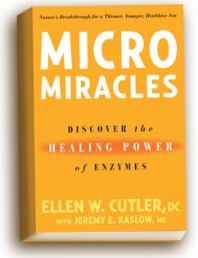 Two sacred cows of nutrition for the people of the United States have been bread and milk. The low carb craze has heightened the public’s awareness about the dangers associated with refined starches, such as most cereals, breads, and pasta. Many people steer clear of these more refined starches and many even avoid the whole grains.
Two sacred cows of nutrition for the people of the United States have been bread and milk. The low carb craze has heightened the public’s awareness about the dangers associated with refined starches, such as most cereals, breads, and pasta. Many people steer clear of these more refined starches and many even avoid the whole grains.
Whole grains do contain fiber that assists in intestinal peristalsis, and also tends to assist in blood sugar regulation.1 Despite these benefits, whole grains are rich in pro-inflammatory substances, suggesting that we should eat only condiment-sized portions of whole grains. Whole grains contain only the pro-inflammatory omega-6 fatty acids, gliadin, lectins, and they promote tissue acidity.2
The pro-inflammatory nature of all grains is a severe blow to many who crave this starchy food. Nonetheless, in 2004, when we in Florida were hit with four hurricanes, the grocery stores were quickly emptied of their bread supplies. I don’t know what storms do to the minds of people; however, they seem to powerfully influence their food choices. When storms move into town, bread and milk quickly leave the supermarkets.
My perception is that most people continue to view bread and milk as two important staples…and nothing is further from the truth. Humans are designed to eat vegetation (vegetables, fruits, nuts, roots, and tubers) and animals that ate vegetation. From a historical and evolutionary perspective, grains and dairy are new foods.
Refined grains are known to be unhealthy, while whole grains receive positive reviews—even though they offer many pro-inflammatory possibilities. Unlike whole grains, dairy has received some bad press over the years, as lactose intolerance is not uncommon. Many have also heard arguments about the likely unhealthy nature of processed milk, or that casein, the milk protein, is not an ideal protein source. And there is evidence suggesting that early introduction of milk to children can promote allergies.3
While the jury is still out, recent evidence suggests that milk consumption may be risky, particularly for those over the age of 30 who are moving toward developing syndrome X—a prediabetic state that is thought to promote diabetes and its many related diseases, such as cancer and heart disease. In part, syndrome X is characterized by hyperinsulinemia, which can be greatly influenced by diet. Most readers are familiar with the glycemic index (GI), which basically refers to the blood sugar response after a food is ingested. The higher the index, the greater the blood sugar response. A low GI would be 55 or less, a medium GI is considered to be 56-69, and high GI is 70 or more. Typically, the insulin response is commensurate to the GI, which means our goal should be to eat foods with a low glycemic index. Visit www.glycemicindex.com for a listing of GI’s for most foods.
Foods such as fruits, vegetables, animal products, and dairy have a low glycemic index, compared with refined foods and certain whole grain products. Skim and whole milk have a GI of about 30, which is low and desirable. However, it seems that the milk’s low GI is betrayed by a high insulin response.
Researchers found that the insulinemic response to milk is similar to that of white bread, which has a high glycemic index. In short, milk promotes an insulin response that is three to six times greater than would be expected based on the GI of milk.4 Of dairy products, only cheese has a low insulinemic response: 45 for cheese, compared to 145 for whole and skim milk.5
It seems possible that our reliance on milk as a staple food may play a role in the development of syndrome X and diabetes. Caution should be exercised when consuming milk and milk products until more is known.
Dr. Seaman is the Clinical Chiropractic Consultant for Anabolic Laboratories, one of the first supplement manufacturers to service the chiropractic profession. He is on the postgraduate faculties of several chiropractic colleges, providing nutrition seminars that focus on the needs of the chiropractic patient. Dr. Seaman can be reached by e-mail at [email protected].
References
1. Pereira MA et al. Effect of whole grains on insulin sensitivity in overweight hyperinsulinemic adults. Am J Clin Nutr 2004; Am J Clin Nutr 2002;75:848–855
2. Cordain L. Cereal grains: humanity’s double-edged sword. World Rev Nutr Diet 1999; 84:19-73
3. Iacono G, Cavataio F, Montalto G, Soresi M, Notarbartolo A, Carroccio A. Persistent cow’s milk protein intolerance in infants: the changing faces of the same disease. Clin Exp Allergy. 199; 28:817-23
4. Ostman EM, Elmstahl H, Bjorck I. Inconsistency between glycemic and insulinemic responses to regular and fermeted milk products. Am J Clin Nutr 2001; 74:96-100
5. Hoyt G, Hickey Ms, Cordain L. Dissociation of the glycemic and insulinemic responses to whole and skimmed milk. Brit J Nutr 2005; 93:175-77


 In the Beginning…
In the Beginning…


 Movie producer/director Morgan Spurlock has been very helpful in illustrating the pro-inflammatory nature of our modern fast food eating habits. His documentary, entitled Supersize Me, has been airing on cable movie channels and is also available as a video/CD. If you have not seen Supersize Me, you need to see it now and waste no time about it…and then share the information with your patients.
Movie producer/director Morgan Spurlock has been very helpful in illustrating the pro-inflammatory nature of our modern fast food eating habits. His documentary, entitled Supersize Me, has been airing on cable movie channels and is also available as a video/CD. If you have not seen Supersize Me, you need to see it now and waste no time about it…and then share the information with your patients.